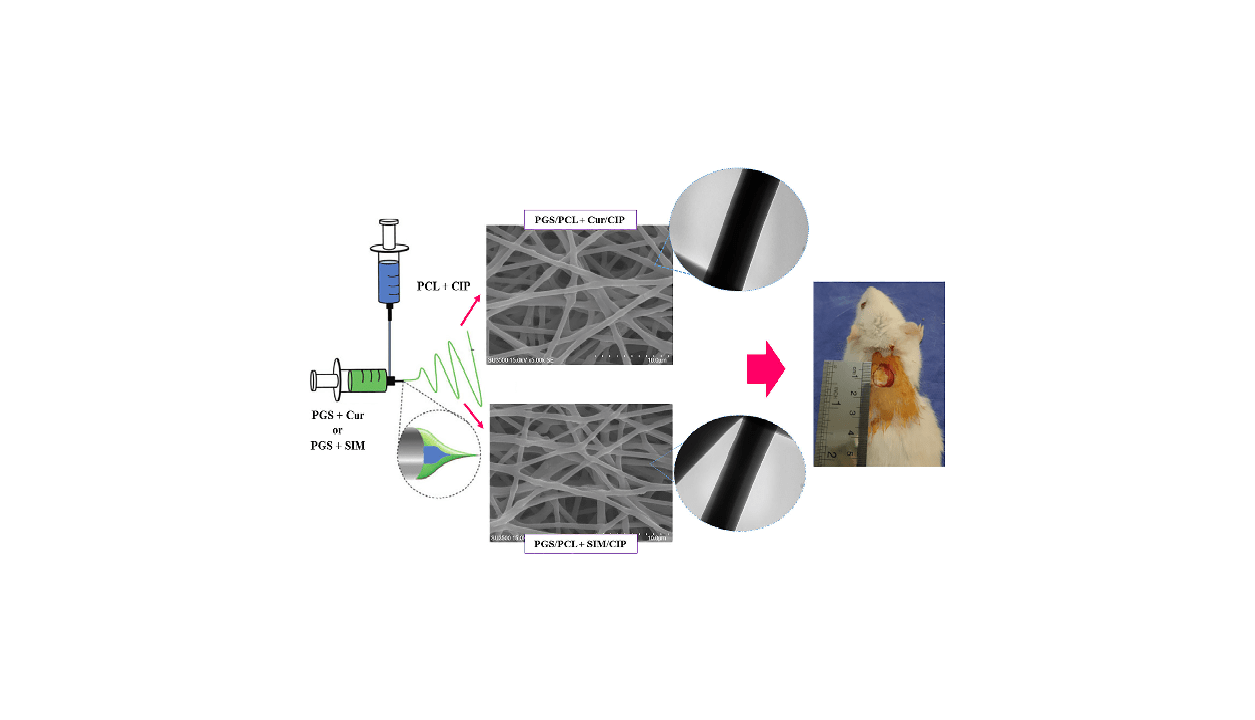Inflammation and infection are two main factors predisposing a wound to become a chronic one. Degradable wound dressings involving the controlled release of suitable drugs at the ulcer site are one of the solutions to make wounds healing progress smoothly and rapidly. In this research, biodegradable dressings made of polyglycerol sebacate/polycaprolactone (PGS/PCL) containing curcumin/ciprofloxacin (CUR/CIP) and simvastatin/ciprofloxacin (SIM/CIP) were prepared by using the coaxial electrospinning method. Transmission electron microscopy for uniform core/shell structure, swelling ratio, and drug release pattern of the wound dressings were evaluated. At the in vivo study, histometric, histopathologic, and collagen expression study was performed. The PGS/PCL samples containing SIM/CIP showed a burst release pattern of CIP with a delay in the release of SIM; meanwhile, in the samples containing CUR/CIP, both drugs showed a burst release behavior. No cytotoxicity response was observed in the study groups. The in vivo study showed that wound closure was almost completed only in the SIM/CIP group after 14 days. After 14 days, in the wound treated with SIM/CIP dressing, the amount of collagen deposition and angiogenesis was higher than that of the others. These results clearly showed the effect of SIM/CIP on the improvement of the wound healing efficiency in the long term (14 days) and the effect of CUR/CIP on wound contraction in the short term (4 day). It seems, therefore, that the use of SIM and CUR simultaneously in a wound dressing could cause a synergistic effect in the wound repair.
Comparing the wound healing effect of a controlled release wound dressing containing curcumin/ciprofloxacin and simvastatin/ciprofloxacin in a rat model: A preclinical study

28
آذر
